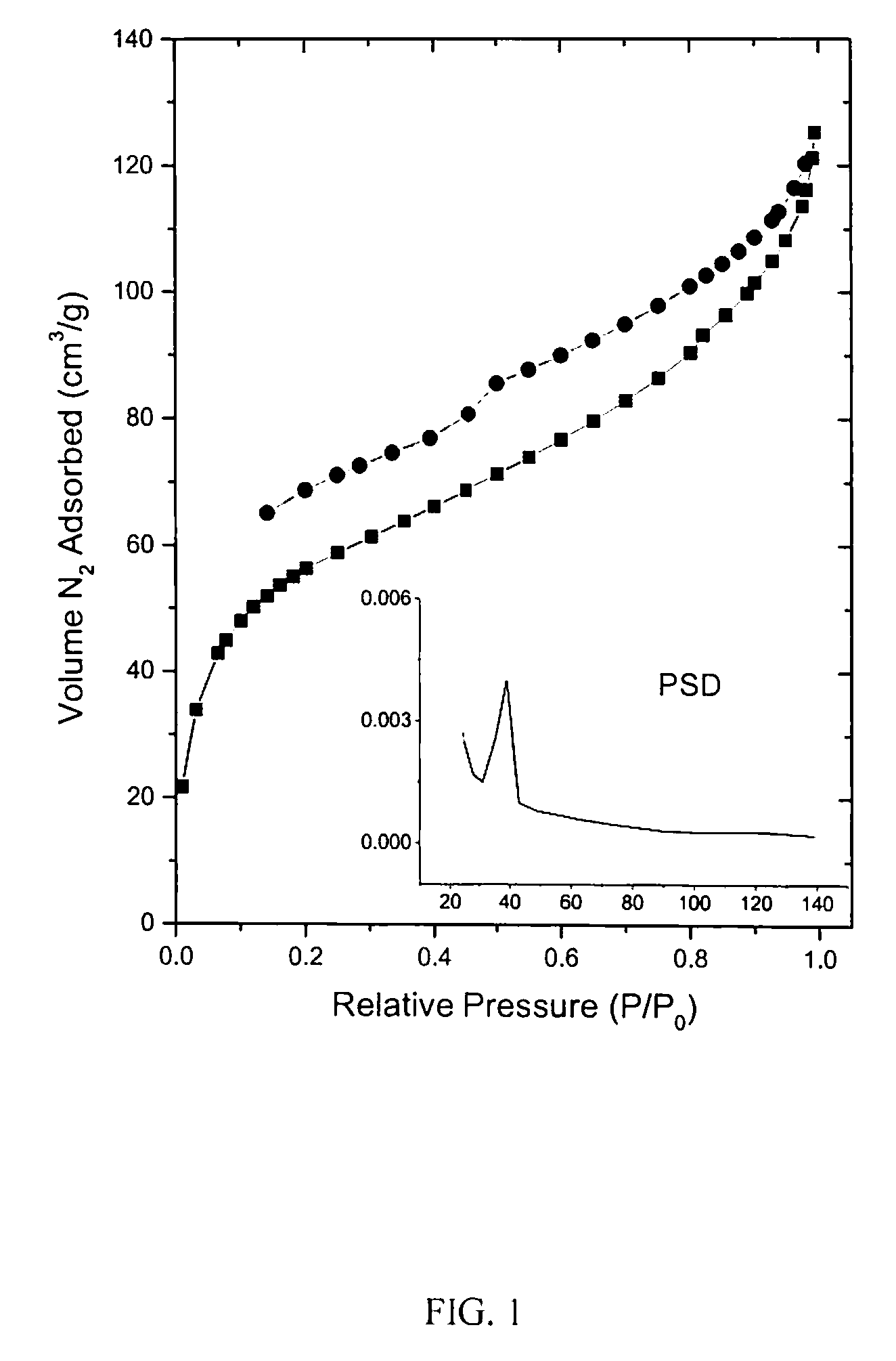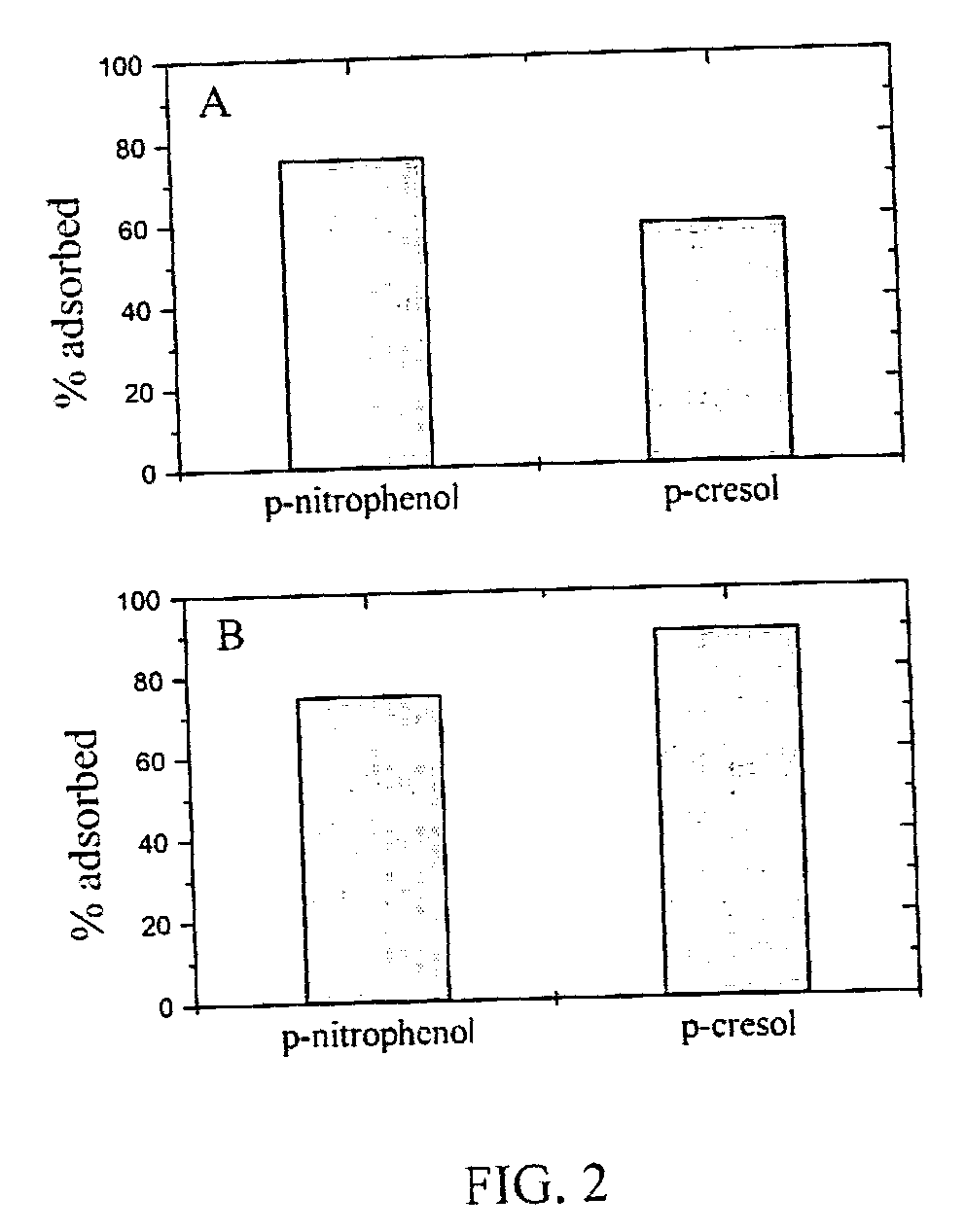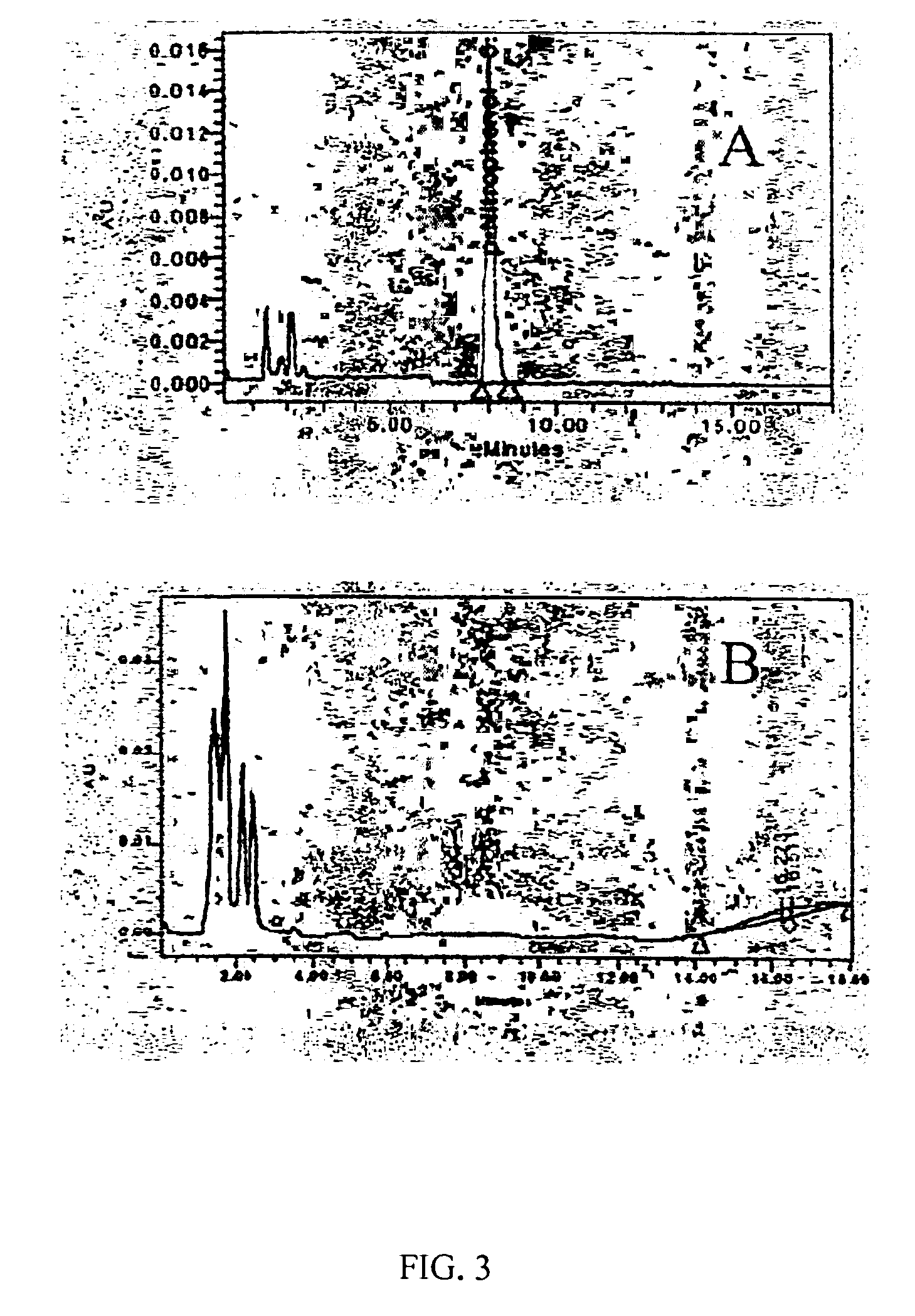Fluorphore embedded/incorporating/bridged periodic mesoporous organosilicas as recognition photo-decontamination catalysts
- Summary
- Abstract
- Description
- Claims
- Application Information
AI Technical Summary
Benefits of technology
Problems solved by technology
Method used
Image
Examples
Embodiment Construction
[0016] The synthesis of the porphyrin embedded molecularly imprinted PMO and the porphyrin embedded PMO is discussed in the example. The physiochemical properties of the PMOs are shown in Table 1. FIG. 1 shows the nitrogen sorption (▪) and desorption (●) isotherms for IPDEB PMOs, demonstrating the creation of the porphyrin embedded PMO while maintaining porosity and with minimal reduction in surface area. The inset of plot shown in FIG. 1 shows the pore size distributions of the materials.
TABLE 1BET surface areaTotal Pore VolumeBJH Pore DiameterPMO(m2 / g)(cm3 / g)(Å)IDEB2440.1931IPDEB2060.1834
[0017] Adsorption of phenols onto porphyrin embedded molecularly imprinted PMO: The adsorption of p-nitrophenol and p-cresol from single sorbate and competitive binary solutions is shown in FIG. 2. As shown, the IPDEB PMO shows high affinity for substituted phenols from single sorbate (FIG. 2A) and binary (FIG. 2B); competitive p-nitrophenol-p-cresol) solution. FIG. 2 shows the adsorption of sub...
PUM
| Property | Measurement | Unit |
|---|---|---|
| Volume | aaaaa | aaaaa |
| Volume | aaaaa | aaaaa |
| Molar density | aaaaa | aaaaa |
Abstract
Description
Claims
Application Information
 Login to View More
Login to View More - R&D
- Intellectual Property
- Life Sciences
- Materials
- Tech Scout
- Unparalleled Data Quality
- Higher Quality Content
- 60% Fewer Hallucinations
Browse by: Latest US Patents, China's latest patents, Technical Efficacy Thesaurus, Application Domain, Technology Topic, Popular Technical Reports.
© 2025 PatSnap. All rights reserved.Legal|Privacy policy|Modern Slavery Act Transparency Statement|Sitemap|About US| Contact US: help@patsnap.com



